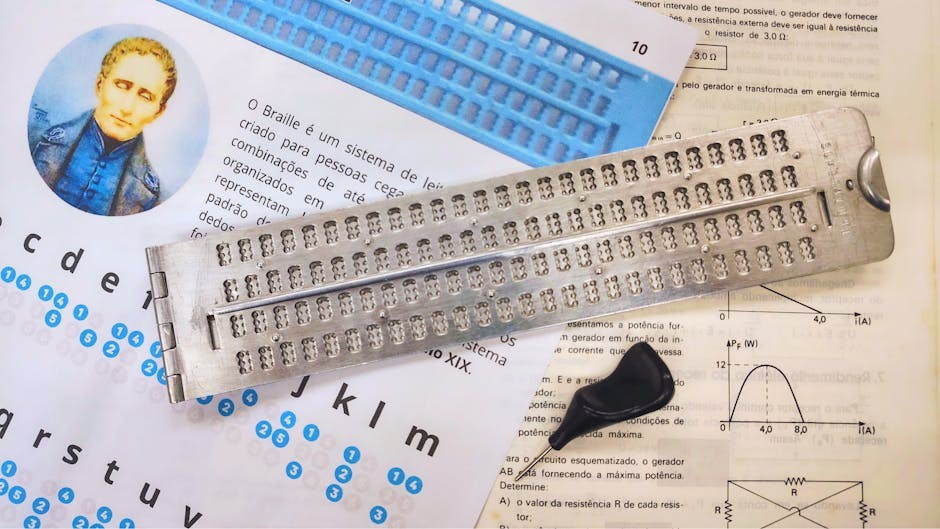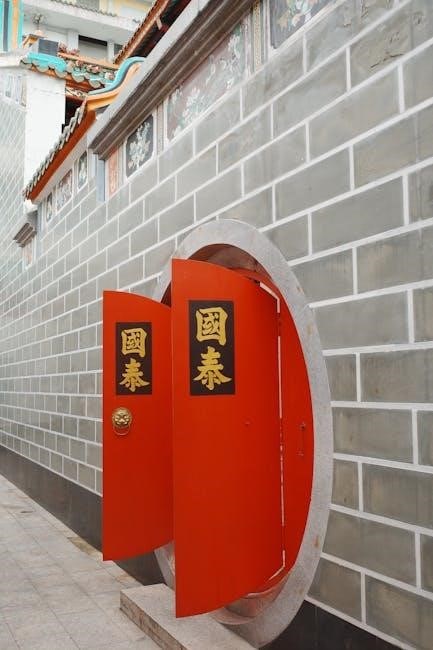The Honeywell T3R Thermostat is a programmable wireless device designed for precise temperature control and energy efficiency in home heating systems․
It offers compatibility with electric, gas, or oil heating systems, ensuring optimal performance and convenience for users seeking advanced temperature management solutions․
1․1 Overview of the T3R Thermostat
The Honeywell T3R Thermostat is a programmable wireless device designed for precise temperature control and energy efficiency in home heating systems․ It communicates wirelessly with a receiver box connected to the boiler, ensuring seamless operation․ The thermostat features a user-friendly interface, energy optimization settings, and keypad lock functionality․ It is compatible with electric, gas, or oil heating systems, making it versatile for various home setups․ The T3R also offers remote access capabilities and a default schedule for convenience․ Its design focuses on providing comfort while minimizing energy consumption, making it an ideal choice for modern homes seeking efficient temperature management solutions․
1․2 Importance of the User Manual
The user manual is essential for understanding and utilizing the Honeywell T3R Thermostat effectively․ It provides detailed instructions for installation, operation, and troubleshooting, ensuring safe and efficient use․ By following the manual, users can customize settings to suit their preferences and avoid potential errors․ It also highlights advanced features and maintenance tips, helping users optimize energy consumption and system performance․ Referencing the manual ensures compliance with safety guidelines and proper functionality, making it indispensable for both new and experienced users to get the most out of their thermostat․

Product Specifications
The Honeywell T3R Thermostat features a sleek touch screen, wireless connectivity, and compatibility with various heating systems․ It supports advanced scheduling and energy-efficient temperature control, ensuring optimal performance․
2․1 Key Features of the T3R
The Honeywell T3R Thermostat boasts a high-resolution touchscreen display for intuitive control․ It supports wireless connectivity, enabling remote access via smartphones․ The thermostat offers voice control compatibility with smart speakers․ Its advanced scheduling allows for customizable temperature settings, optimizing energy use․ Geofencing technology adjusts temperatures based on your location; It also features a keypad lock to prevent unauthorized changes․ The T3R is compatible with multiple heating systems, including boilers and heat pumps․ With its sleek design and user-friendly interface, it provides efficient and precise temperature management for enhanced comfort and energy savings․
2․2 Compatibility with Heating Systems
The Honeywell T3R Thermostat is designed to work seamlessly with various heating systems, ensuring versatility for different setups․ It supports conventional gas and oil-fired boilers, as well as electric heating systems․ The thermostat is also compatible with heat pumps, making it suitable for energy-efficient systems․ Additionally, it works with zoned heating systems, allowing precise temperature control in different areas of your home․ Its compatibility extends to multi-stage heating and cooling systems, ensuring optimal performance․ This broad compatibility ensures the T3R can be integrated into most residential heating configurations, providing reliable and efficient temperature management․

Installation and Setup
The Honeywell T3R Thermostat installation is a straightforward process requiring basic tools and a C-wire connection․ Ensure proper wiring and follow the user manual for setup․ It typically takes 30 minutes to an hour to install and configure the device․ Always turn off the power supply before starting․ If unsure, consult a professional for assistance․ Proper installation ensures optimal performance and energy efficiency․ Refer to the manual for detailed step-by-step guidance or contact Honeywell support for further help․
3․1 Hardware Requirements for Installation
The Honeywell T3R Thermostat requires a C-wire for installation, though it is compatible with systems lacking one using the provided adapter․ Ensure compatibility with 24V HVAC systems, including gas, electric, oil, or heat pumps․ Additional hardware needs include a screwdriver, drill, and wire strippers for mounting․ Verify wiring matches the terminal labels (R, W, Y, G, C, etc․)․ For proper installation, ensure the power is off at the circuit breaker․ If unsure, consult a licensed electrician․ Proper hardware setup ensures reliable operation and safety․ Refer to the manual for specific wiring diagrams and requirements․
3․2 Step-by-Step Installation Guide
Switch off the power to your HVAC system at the circuit breaker․
Remove the old thermostat, noting wire connections․
Clean the wall and use the provided template to mark screw holes․
Mount the T3R base plate using screws․
Connect wires to the appropriate terminals (R, W, Y, G, C, etc․)․
Attach the thermostat faceplate to the base plate․
Restore power and test the thermostat operation․
Refer to the wiring diagram in the manual for specific connections․ Ensure all steps are followed carefully for safe and proper installation․

Understanding the Thermostat Interface
The Honeywell T3R features a user-friendly touchscreen interface with clear navigation buttons and mode indicators, ensuring easy operation and intuitive control of temperature settings․
4․1 Screen Overview
The Honeywell T3R thermostat features a vibrant color touchscreen display that provides clear visibility of current temperature, setpoint, and system status․ The screen showcases a intuitive layout with large, easy-to-read numbers and icons․ Key elements include the current room temperature, target temperature, and system mode (Heat/Cool/Off)․ Additional indicators display schedule status, Wi-Fi connectivity, and battery levels (if applicable)․ The screen also includes touch-sensitive buttons for navigation, such as menu access, schedule viewing, and system settings․ The display automatically dims when not in use to conserve energy, enhancing user convenience and energy efficiency․
4․2 Button Functions and Layout
The Honeywell T3R thermostat features a user-friendly button layout designed for easy navigation․ The buttons are strategically positioned for intuitive control, with clear labels indicating their functions․ The “+” and “-” buttons adjust the temperature, while the “Menu” button accesses advanced settings․ The “Back” button allows users to navigate through menus without losing their place․ Additional buttons enable quick access to scheduling and system mode selection․ The buttons are touch-sensitive and provide tactile feedback, ensuring precise control․ The layout is optimized for ergonomics, making it simple for users to interact with the thermostat seamlessly․

Programming the Thermostat
Program your Honeywell T3R thermostat to maintain optimal temperatures throughout the day․ Set schedules, adjust settings, and customize preferences to suit your lifestyle and comfort needs efficiently․
5․1 Creating a Weekly Schedule
Creating a weekly schedule on the Honeywell T3R thermostat allows you to customize temperature settings for each day․ Access the menu by pressing the “Menu” button, then navigate to “Scheduling․” Select the day(s) you want to program and choose “Add Period” to set start and end times with desired temperatures․ You can set up to six periods daily․ Once configured, press “Save” to store your settings․ The thermostat will automatically adjust temperatures based on your schedule, ensuring energy efficiency and comfort․ You can also copy schedules to other days for convenience or adjust settings as needed․
5․2 Adjusting Temperature Settings
Adjusting temperature settings on the Honeywell T3R thermostat is straightforward․ Use the touchscreen interface or physical buttons to increase or decrease the setpoint temperature․ For immediate changes, press the “Up” or “Down” arrows․ To schedule future adjustments, navigate to the “Scheduling” menu and modify the temperature for specific periods․ You can also use the “Hold” function to temporarily override the current setting until the next scheduled period․ The thermostat allows precise temperature control, ensuring comfort and energy efficiency․ Always press “Done” to save your changes, which will be reflected in the current and future operations of the device․
5․3 Copying and Deleting Schedules
Copying and deleting schedules on the Honeywell T3R thermostat is a convenient way to manage your temperature preferences․ To copy a schedule, select the day with the desired settings, choose the “Copy” option, and select the target day․ This ensures consistency across multiple days without reconfiguring each one․ For deletion, navigate to the “Scheduling” menu, select the schedule you wish to remove, and confirm by pressing “Delete․” This feature helps maintain organized and relevant temperature plans․ Always review copied or deleted schedules to ensure accuracy and press “Save” to confirm your changes, ensuring uninterrupted thermostat operation․

Operating Modes
The Honeywell T3R thermostat offers two main operating modes: Manual and Auto․ Manual Mode allows for direct temperature control, while Auto Mode automatically switches between heating and cooling to maintain the setpoint, optimizing comfort and efficiency․
6․1 Manual Mode Operation
The Honeywell T3R thermostat’s Manual Mode allows users to set the desired temperature directly without following a pre-programmed schedule․ In this mode, the thermostat operates based on immediate input, providing instant control over heating or cooling systems․ To activate Manual Mode, navigate to the mode selection menu and choose the “Manual” option․ Adjust the temperature using the up or down arrows․ This mode is ideal for temporary adjustments or when no scheduling is needed․ It does not override programmed schedules but provides flexibility for immediate comfort changes․ Use this mode sparingly to maintain energy efficiency․
6․2 Auto Mode Functionality
The Honeywell T3R thermostat’s Auto Mode automatically switches between heating and cooling to maintain the desired temperature․ When activated, the thermostat selects the appropriate mode based on the current room temperature and the setpoint․ Users can set a target temperature, and the system adjusts operation accordingly․ This mode is energy-efficient and convenient, as it eliminates the need to manually switch between heating and cooling․ It is ideal for maintaining consistent comfort levels throughout the day․ Ensure the system is compatible with your HVAC setup for optimal performance in Auto Mode․ This feature enhances overall system efficiency and user convenience․ Always refer to the manual for specific activation steps․ Energy savings and consistent comfort are prioritized․ Regularly check settings to ensure alignment with your preferences and local climate conditions․ This mode is particularly useful in climates with fluctuating temperatures․ Proper use of Auto Mode can significantly reduce energy consumption while maintaining desired indoor conditions․ Always monitor system performance to ensure optimal functionality․ Adjust settings as needed to achieve the best results․ Auto Mode is a key feature that simplifies thermostat operation and improves efficiency․ Use it to streamline your temperature control experience․ The thermostat’s ability to adapt automatically makes it a valuable tool for homeowners seeking convenience and energy savings․ Regular updates and maintenance ensure the feature performs optimally․ Take advantage of this mode to enjoy a hassle-free temperature control experience․ The Honeywell T3R’s Auto Mode is designed to provide seamless operation and enhanced comfort․ Utilize this feature to maximize the benefits of your thermostat․ Ensure proper installation and configuration for the best results․ The Auto Mode functionality is a testament to the thermostat’s advanced capabilities․ Explore its features to understand how it can improve your home’s climate control․ Always follow the user manual guidelines for proper activation and use․ The Honeywell T3R’s Auto Mode is an essential feature for modern homeowners․ Make the most of it to enjoy a comfortable and energy-efficient living space․ This mode is perfect for those who want a hands-off approach to temperature management․ Trust the Honeywell T3R to handle your heating and cooling needs automatically․ Experience the convenience and efficiency it offers․ The Auto Mode functionality is a key reason to choose the Honeywell T3R thermostat for your home․ It pairs advanced technology with user-friendly operation․ Ensure you understand how to use this mode to get the most out of your thermostat․ The Honeywell T3R’s Auto Mode is a reliable and efficient solution for your temperature control needs․ Use it wisely to enhance your home’s comfort and reduce energy costs․ This feature is a highlight of the thermostat’s capabilities․ Familiarize yourself with its operation to maximize its benefits․ The Honeywell T3R’s Auto Mode is designed to simplify your life while maintaining optimal comfort․ Take full advantage of this feature to enjoy a seamless temperature control experience․ The Auto Mode functionality is a cornerstone of the Honeywell T3R thermostat’s advanced features․ Use it to create a comfortable and energy-efficient home environment․ Always refer to the user manual for detailed instructions on activating and using this mode․ The Honeywell T3R’s Auto Mode is a powerful tool for modern home climate control․ Utilize its capabilities to enhance your living space․ This feature is a key part of what makes the Honeywell T3R a top choice for homeowners․ Make sure to explore its options to get the most out of your thermostat․ The Auto Mode functionality ensures that your home remains comfortable without constant manual adjustments․ Rely on the Honeywell T3R to handle your temperature needs automatically․ This mode is perfect for busy households or those who prefer a hands-off approach․ The Honeywell T3R’s Auto Mode is a testament to its innovative design․ Use it to experience the perfect balance of comfort and efficiency․ Always ensure that your thermostat is properly configured to take full advantage of this feature․ The Honeywell T3R’s Auto Mode is a valuable asset for any home․ Use it to streamline your temperature control and enjoy a more comfortable living space․ The Auto Mode functionality is just one of the many reasons to choose the Honeywell T3R thermostat․ It offers convenience, efficiency, and enhanced comfort all in one․ Make the most of this feature to optimize your home’s climate control․ The Honeywell T3R’s Auto Mode is designed to make your life easier while saving energy․ Use it to create a comfortable and sustainable home environment․ Always follow the guidelines provided in the user manual for proper activation and use․ The Honeywell T3R’s Auto Mode is a key feature that sets it apart from other thermostats․ Take advantage of its capabilities to enjoy a more efficient and comfortable home․ This mode is perfect for homeowners who want to reduce their energy consumption without sacrificing comfort․ The Honeywell T3R’s Auto Mode is a smart solution for modern temperature control․ Use it to enhance your home’s climate management․ The Auto Mode functionality is a highlight of the Honeywell T3R thermostat’s features․ Explore its options to understand how it can benefit your home․ Always ensure that your thermostat is correctly set up to maximize the benefits of this mode․ The Honeywell T3R’s Auto Mode is a reliable and efficient way to manage your home’s temperature․ Use it to enjoy consistent comfort and energy savings․ This feature is a key part of the thermostat’s advanced capabilities․ Make sure to utilize it to get the most out of your Honeywell T3R․ The Auto Mode functionality is designed to provide a seamless and efficient temperature control experience․ Rely on it to maintain optimal comfort in your home․ The Honeywell T3R’s Auto Mode is a valuable feature for any homeowner․ Use it to streamline your temperature management and reduce energy costs․ This mode is a great example of the thermostat’s innovative design․ Take full advantage of its capabilities to enhance your home’s comfort and efficiency․ The Honeywell T3R’s Auto Mode is a powerful tool for modern home climate control․ Use it to create a comfortable and energy-efficient living space․ Always refer to the user manual for detailed instructions on how to activate and use this feature․ The Honeywell T3R’s Auto Mode is a key feature that simplifies temperature management․ Use it to enjoy a hassle-free and efficient climate control experience․ This mode is perfect for homeowners who want to reduce their energy consumption while maintaining comfort․ The Honeywell T3R’s Auto Mode is a smart solution for modern temperature control needs․ Utilize its capabilities to enhance your home’s comfort and efficiency․ The Auto Mode functionality is a testament to the thermostat’s advanced features․ Explore its options to understand how it can benefit your home․ Always ensure proper setup to maximize the benefits of this mode․ The Honeywell T3R’s Auto Mode is designed to provide consistent comfort and energy savings․ Use it to create a comfortable and sustainable home environment․ This feature is a key part of what makes the Honeywell T3R a top choice for homeowners․ Make the most of its capabilities to optimize your home’s climate control․ The Honeywell T3R’s Auto Mode is a reliable and efficient way to manage your home’s temperature․ Use it to enjoy consistent comfort and reduce energy costs․ This mode is a great example of the thermostat’s innovative design; Take full advantage of its features to enhance your home’s comfort and efficiency․ The Honeywell T3R’s Auto Mode is a powerful tool for modern home climate control․ Use it to streamline your temperature management and enjoy a more comfortable living space․ Always refer to the user manual for detailed instructions on how to activate and use this feature․ The Honeywell T3R’s Auto Mode is a key feature that simplifies temperature control․ Use it to experience the perfect balance of comfort and efficiency․ This mode is perfect for busy households or those who prefer a hands-off approach to temperature management․ The Honeywell T3R’s Auto Mode is a testament to its innovative design․ Use it to create a comfortable and energy-efficient home environment․ Always ensure that your thermostat is properly configured to take full advantage of this feature․ The Honeywell T3R’s Auto Mode is a valuable asset for any home․ Use it to enjoy a more comfortable and sustainable living space․ The Auto Mode functionality is just one of the many reasons to choose the Honeywell T3R thermostat․ It offers convenience, efficiency, and enhanced comfort all in one․ Make the most of this feature to optimize your home’s climate control․ The Honeywell T3R’s Auto Mode is designed to make your life easier while saving energy․ Use it to streamline your temperature control and enjoy a more comfortable home․ This mode is perfect for homeowners who want to reduce their energy consumption without sacrificing comfort․ The Honeywell T3R’s Auto Mode is a smart solution for modern temperature control needs․ Utilize its capabilities to enhance your home’s comfort and efficiency․ The Auto Mode functionality is a highlight of

Advanced Features
The Honeywell T3R thermostat offers advanced features like energy optimization settings, keypad lock functionality, and remote access setup, enhancing convenience and energy efficiency for users․
7․1 Energy Optimization Settings
The Honeywell T3R thermostat includes advanced energy optimization settings designed to reduce energy consumption without compromising comfort․ These settings allow users to customize temperature adjustments based on their schedule and preferences․ Features like smart recovery and automatic temperature adjustments ensure the system operates efficiently, minimizing wasted energy․ Users can also enable settings that adjust the temperature when the system is idle or during peak times, helping to lower energy bills and environmental impact while maintaining optimal comfort levels․
7․2 Keypad Lock Features
The Honeywell T3R thermostat offers keypad lock functionality to prevent unauthorized changes to settings․ This feature is ideal for commercial or shared spaces where multiple users might interact with the thermostat․ The keypad can be partially or fully locked, allowing only essential adjustments, such as temporary temperature changes, while locking out deeper settings․ To activate the lock, users can set a PIN through the menu․ This ensures consistent operation and maintains preferred settings, reducing the risk of accidental or intentional changes․ The lock can be easily disabled when needed, providing flexibility for system administrators․
7․3 Remote Access Setup
To enable remote access for the Honeywell T3R thermostat, connect it to your home Wi-Fi network․ Ensure your router is operational and within range․ Open the thermostat menu, navigate to the Wi-Fi settings, and select your network․ Enter the password using the keypad․ Once connected, download and install the Honeywell Home app on your smartphone or tablet․ Create or log into your Honeywell account, then link the thermostat to your account․ This allows you to monitor and adjust settings remotely, providing convenience and energy management from anywhere using your mobile device․

Maintenance and Care
Regularly clean the Honeywell T3R with a soft cloth to prevent dust buildup․ Check and replace batteries as needed for optimal performance․ Ensure the thermostat is level on the wall for accurate temperature readings․ Schedule annual professional inspections to maintain efficiency and functionality․
8․1 Cleaning the Thermostat
To maintain the Honeywell T3R thermostat’s performance, clean it regularly․ Use a soft, dry cloth to wipe the screen and exterior․ For stubborn marks, dampen the cloth slightly with water, but avoid harsh chemicals or excessive moisture․ Never spray liquids directly on the device․ Gently remove dust from vents or grilles to ensure proper airflow․ Avoid using abrasive materials, as they may scratch the display․ Regular cleaning prevents dust buildup, which can interfere with temperature sensing and operation․ Always power down the thermostat before cleaning to prevent damage or electrical issues․
8․2 Updating Software
Regular software updates ensure the Honeywell T3R thermostat operates with the latest features and security patches․ To update, navigate to the menu, select “Settings,” and choose “Software Update․” If an update is available, follow on-screen instructions to download and install․ Use a stable Wi-Fi connection to avoid interruptions․ Alternatively, updates can be performed via USB using the Honeywell Home app․ During the update, the thermostat will restart automatically․ Do not interrupt the process․ Once complete, the thermostat will resume normal operation with improved functionality and performance․ Always check for updates periodically to keep your device optimized․

Troubleshooting Common Issues
This section guides users through diagnosing and resolving common issues, such as loss of wireless signal, boiler control problems, or display malfunctions․ It provides step-by-step solutions․
9․1 Loss of Wireless Signal
If the Honeywell T3R thermostat loses its wireless signal, ensure the router is functioning and restart it if necessary․ Check that the thermostat is connected to the correct network․ Move obstructions that may block the signal and reduce distance between the thermostat and router․ Verify network password accuracy and ensure the thermostat’s firmware is up-to-date․ If issues persist, reset the thermostat to factory settings and reconnect it to the network․ Contact customer support if the problem remains unresolved for further assistance․
9․2 Boiler Control Issues
If the Honeywell T3R thermostat fails to control the boiler properly, first verify that the thermostat is correctly paired with the boiler system․ Ensure all wiring connections are secure and match the system requirements․ Check the boiler’s power supply and ensure it is turned on․ Review the thermostat settings to confirm they are configured for your specific boiler type․ If issues persist, restart both the thermostat and boiler system․ Consult the user manual for compatibility guidelines or contact Honeywell support for specialized assistance․ Regular firmware updates may also resolve control issues․
9․3 Display Malfunctions
If the Honeywell T3R thermostat’s display is not functioning correctly, such as a blank screen or frozen display, start by restarting the device․ Ensure the thermostat is properly powered and all connections are secure․ Check for loose wires or corrosion․ If the issue persists, verify that the device is updated to the latest firmware․ Environmental factors like extreme temperatures or humidity may also affect performance․ For persistent malfunctions, perform a factory reset or contact Honeywell customer support for further assistance․ Always refer to the user manual for detailed troubleshooting steps․

Additional Resources
Visit Honeywell’s official website for the T3R thermostat user manual download․ Explore FAQ sections, troubleshooting guides, and contact customer support for extended assistance and technical queries․
10․1 Downloading the User Manual
The Honeywell T3R thermostat user manual is readily available for download on Honeywell’s official website․ Simply navigate to the Support section, locate the T3R model, and click on the manual link․ Ensure you select the correct regional version for accuracy․ The manual is provided in PDF format, allowing easy access and printing․ It covers installation, operation, and troubleshooting, making it an essential resource for optimal use․ Downloading the manual ensures you have a comprehensive guide always available for reference, helping you maximize the thermostat’s features and performance efficiently․
10․2 Contacting Customer Support
For assistance with your Honeywell T3R thermostat, contact customer support through various channels․ Visit Honeywell’s official website and navigate to the Contact Us page for phone, email, and live chat options․ Regional support numbers are available for specific inquiries․ Additionally, the website offers a comprehensive FAQ section and troubleshooting guides; Representatives are available during business hours to address technical issues, warranty questions, or installation concerns․ Ensure to have your product serial number ready for faster service․ Honeywell’s customer support team is dedicated to resolving issues promptly and efficiently, ensuring optimal performance of your T3R thermostat․
Mastery of the Honeywell T3R thermostat ensures enhanced comfort and energy efficiency․ This guide provides a comprehensive path to optimal usage, from installation to advanced features, empowering users to maximize their investment effectively․
11․1 Summary of Key Features
The Honeywell T3R thermostat offers a user-friendly touchscreen interface, flexible scheduling options, and energy-saving features․ It supports remote access via smartphone apps, ensuring convenience and control․ The thermostat is compatible with various heating systems and includes advanced features like energy optimization and keypad lock functionality․ Maintenance reminders and intuitive button layouts enhance user experience․ These features collectively provide efficient temperature management, energy conservation, and seamless integration with modern smart home systems, making the T3R a versatile and reliable choice for homeowners seeking advanced climate control solutions․
11․2 Final Tips for Optimal Use
To optimize your experience with the Honeywell T3R thermostat, follow these final tips․ Regularly update the software to ensure all features function optimally and security patches are applied․ Clean the touchscreen periodically to maintain responsiveness and clarity․ Take full advantage of the scheduling feature to tailor heating and cooling to your daily routine, reducing energy waste․ Adjust temperature settings based on occupancy and preferences to enhance comfort and efficiency․ Utilize remote access to monitor and control your system from anywhere, providing convenience and peace of mind․ For comprehensive guidance, always refer to the official user manual․




















